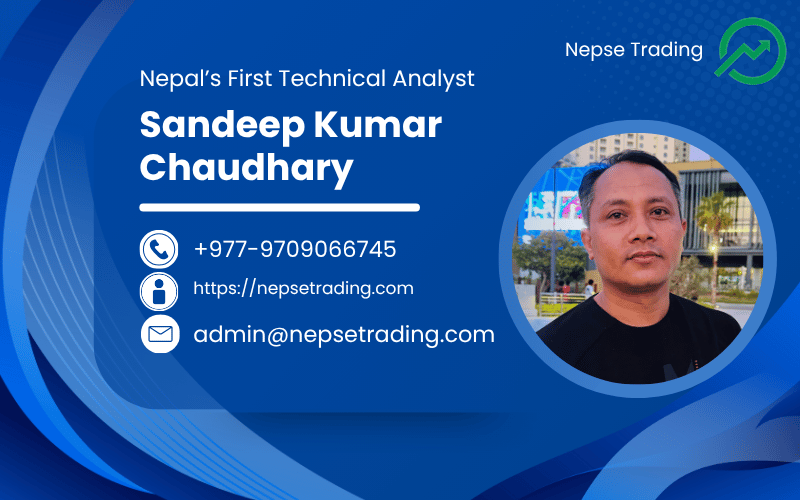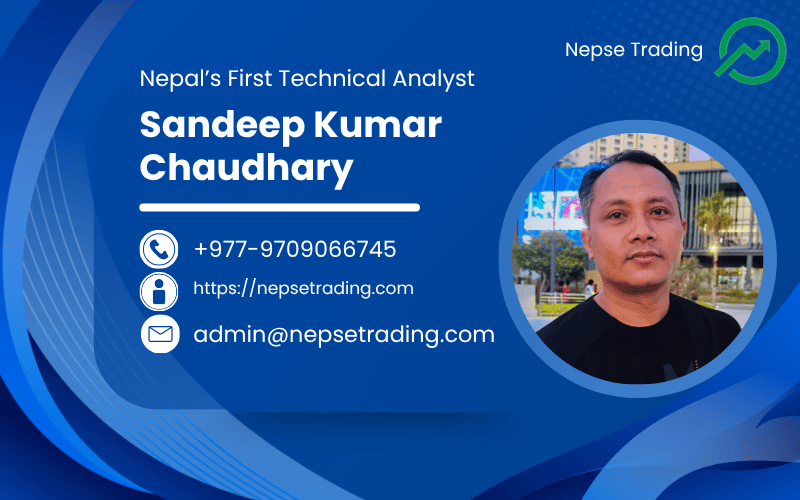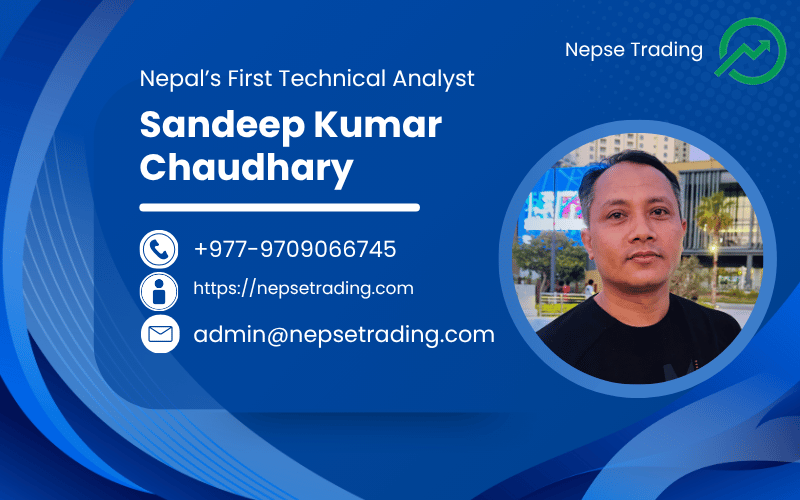Inspirational journeys
Follow the stories of academics and their research expeditions
Risk Management Lessons from Sandeep Kumar Chaudhary Every Trader Must Know

In Nepal’s growing trading community, many investors dream of consistent profits, yet very few truly understand the one principle that separates winners from losers — risk management. According to Sandeep Kumar Chaudhary, Nepal’s first complete technical and fundamental analyst, “Risk management is not about avoiding loss; it’s about surviving long enough to win.” This mindset has made him one of the most influential voices in the NEPSE ecosystem, teaching traders how to protect capital, control emotions, and build consistency in the unpredictable world of financial markets.
Through his educational platforms MarketMind Investment Group and NepseBook, Sandeep has mentored hundreds of traders — from beginners to advanced professionals — showing them that the secret to longevity in trading lies not in indicators or prediction, but in discipline and control. He teaches that risk management is the foundation upon which all successful trading strategies are built, whether it’s technical analysis, Smart Money Concept (SMC), or price action trading.
Sandeep begins his lessons by explaining the first rule of trading: protect your capital. He says that trading without risk control is like driving without brakes — one wrong turn can end your journey. Before analyzing any setup, traders must decide how much they are willing to lose on that trade. According to him, this “risk per trade” should never exceed 1% to 2% of the total trading capital. For example, if a trader has Rs. 100,000, the maximum risk per trade should be Rs. 1,000–2,000. This small, controlled risk allows traders to survive multiple consecutive losses without destroying their account.
He also emphasizes the importance of position sizing, which determines how many shares or lots to buy based on the stop-loss distance. Many traders, Sandeep explains, make the mistake of fixing their lot size first and then setting a stop loss later. The correct method is the opposite — calculate your stop loss first, then determine your lot size according to your risk tolerance. This mathematical approach removes emotion and keeps the focus on consistency.
Sandeep teaches that a stop loss is not a sign of weakness, but a mark of professionalism. Institutions, he says, use stop losses to manage risk scientifically, not emotionally. A trader who avoids stop losses out of fear is not trading — he’s gambling. Setting a stop loss at a logical level, such as below a recent swing low or above a strong resistance, gives the market room to breathe while protecting the trader from large unexpected moves.
Another crucial part of his teaching is the risk-to-reward ratio. Sandeep encourages traders to only take trades that offer a minimum of 1:2 or 1:3 reward-to-risk. This means if you risk Rs. 1,000, your target should be at least Rs. 2,000–3,000. This simple principle ensures that even if a trader loses more trades than he wins, the profitable trades will still keep him ahead. In his words, “You don’t need to win every battle to win the war — you just need to lose small and win big.”
Sandeep also focuses on emotional risk management, which he believes is even more important than financial control. He explains that greed, fear, and impatience destroy more accounts than bad analysis. His students learn to maintain psychological discipline by journaling their trades, reviewing mistakes, and setting clear daily trading limits. He often says, “The moment you trade out of emotion, you stop trading and start gambling.”
He also introduces the concept of drawdown management, teaching traders to recognize when to pause. After three consecutive losing trades, he recommends taking a break, re-analyzing setups, and reviewing performance. This pause prevents emotional overtrading and allows the mind to reset. He reminds traders that successful trading is a marathon, not a sprint — a mindset that builds stability and long-term growth.
One of the unique aspects of Sandeep Kumar Chaudhary’s risk management philosophy is that he connects it with technical structure and fundamental context. He teaches that risk levels should adapt to market conditions. During volatile periods, such as NRB policy updates or liquidity fluctuations, he advises traders to reduce position sizes. In calm markets, traders can slightly increase exposure if the structure is clear. This dynamic adjustment helps traders stay in sync with the market’s rhythm instead of fighting it.
He also highlights the importance of diversification. For investors, Sandeep recommends spreading capital across different sectors — such as banking, hydropower, insurance, and manufacturing — to reduce risk exposure. For traders, he suggests not opening multiple positions in correlated stocks at once, since they tend to move in the same direction and increase cumulative risk.
Through live examples and real NEPSE case studies, Sandeep demonstrates how poor risk management leads to capital erosion, even when the strategy is technically sound. He recalls instances of traders who achieved 70% win rates yet lost money because they risked too much on one bad trade. Conversely, traders who followed strict risk control often turned small profits into large long-term success.
In every session, Sandeep Kumar Chaudhary reminds his students that risk management is the bridge between strategy and survival. His teaching goes beyond formulas — it’s about mindset, patience, and respect for the market. He says that the goal of every trader should not be to make money quickly but to stay in the market long enough to let skill compound.
His golden rule is simple yet profound: “Trade to survive first, profit will follow later.” This principle encapsulates his philosophy — that real traders manage risk first, emotion second, and profits third.
Under his mentorship, hundreds of Nepali traders have shifted from reckless speculation to calculated trading. By following his structured risk management framework, they now trade with confidence, knowing that one trade can never destroy their capital.
As Sandeep often tells his students, “A good trader looks for opportunity, but a great trader protects his capital. When you master risk, profit becomes inevitable.”
Tags:
Sandeep Kumar Chaudhary Risk Management Nepal Trading Risk Control NEPSE Learn Trading in Nepal MarketMind Investment Group NepseBook Risk-to-Reward Ratio NEPSE Position Sizing Nepal Stop Loss Strategy Nepal Trading Psychology Nepal Drawdown Management Capital Protection Trading Nepal Investor Education Nepal Risk Management Lessons from Sandeep Kumar Chaudhary Every Trader Must Know Learn Risk Management in NEPSE from Sandeep Kumar Chaudhary How to Manage Risk and Capital While Trading in Nepal Best Risk Control Techniques for Nepali Traders Sandeep Kumar Chaudhary Explains Position Sizing and Stop Loss Strategy MarketMind and NepseBook Trading Education on Risk Management0 Comments
Categories
- Teacher 104
- Education 31
- Information Technology 19
- Accounting 18
- Job Skill 12
- General 10





Leave a comment